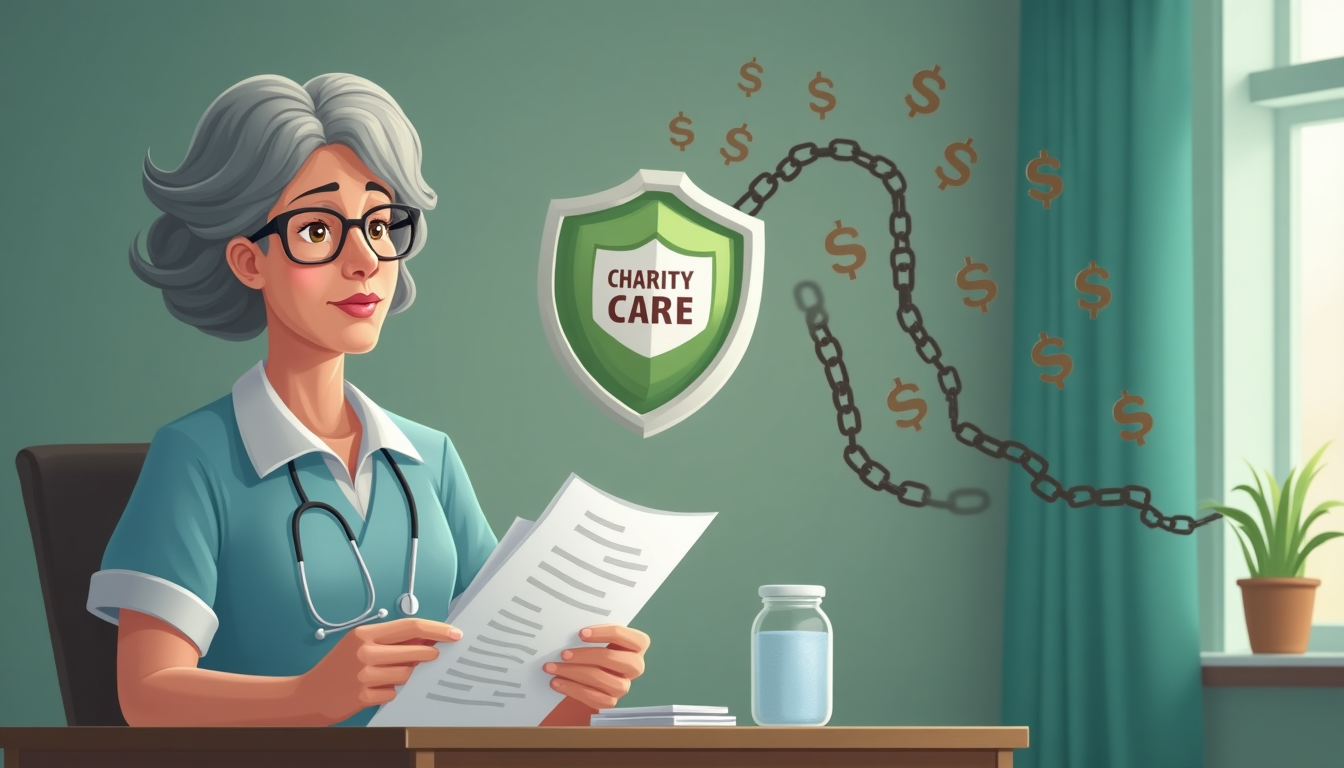How to Access Affordable Healthcare Without Insurance: A Step-by-Step Guide
By Jasmine Washington, Patient Advocate & Healthcare Navigator
Maria, a single mother in Texas, once told me through tears: “I skipped my mammogram for three years because I couldn’t afford it. Now I’m facing a $12,000 biopsy bill, and I still don’t know if it’s cancer.” Her story isn’t unique. With 26 million Americans uninsured[1] and medical debt forcing 33% of patients to sacrifice basic needs like food or rent[2], our healthcare system often fails those who need protection most.
But here’s what I’ve learned from helping thousands of patients like Maria: You have more power than you think. Below are proven strategies to access care without insurance—and advocate for fair billing practices.
Step 1: Understand Your Rights and Emergency Resources
Hospital Charity Care Programs
Nonprofit hospitals receiving tax breaks must offer financial assistance programs under federal law[3]. However, many patients report difficulty accessing these resources.
Action Plan:
- Ask billing departments: “What charity care options exist for my income level?”
- Provide documentation: Pay stubs or tax returns (many hospitals forgive 100% of bills for incomes under 200% of the federal poverty level: $30,000/year for individuals)[4]
- Appeal denials in writing using IRS guidelines for nonprofit hospitals[3]
Success Story: A Georgia patient reduced his $8,000 ER bill to $0 by submitting pay stubs showing income under $25,000/year.
Federally Qualified Health Centers (FQHCs)
These clinics provide primary care, dental services, and mental health support at reduced costs[5].
Key Benefits:
- Sliding scale fees (typically $20-$50 per visit)
- Prescription discounts through the 340B Drug Pricing Program[6]
- Services regardless of immigration status
How to Find FQHCs:
- Visit HHS Health Center Locator
- Filter by needed services (dental, mental health, etc.)
- Call ahead—many clinics reserve slots for uninsured patients
Step 2: Negotiate Medical Bills Effectively
Review Bills for Errors
Up to 80% of medical bills contain billing mistakes[7]. Follow this process:
- Request an itemized bill (required by law)
- Compare charges to Medicare rates at CMS.gov
- Dispute:
- Duplicate charges
- Unspecified fees over $50
- Upcoding (billing for more complex services than provided)
Sample Script:
“I’ve identified charges exceeding CMS guidelines. Can you adjust these to reflect fair market value or provide documentation?”
Payment Negotiation Strategies
Hospitals often prefer partial payments over collections.
Proven Tactics:
- Offer 30-50% of the total as a lump sum[8]
- Request a self-pay discount (typically 20-40%)
- Propose a $0-interest payment plan (many states protect payments as low as $25/month)[9]
Case Study: A Florida freelancer negotiated her $7,200 surgery bill down to $2,900 with an immediate cash payment.
Step 3: Find Hidden Affordable Care Options
Sliding Scale Specialty Care
While rarely advertised, many specialists offer income-based pricing.
How to Access:
- Contact university hospital financial aid offices (e.g., UCLA Health offers 100% discounts for eligible patients)
- Use HRSA HIV/STD Clinic Finder for low-cost services
- Ask pharmacists: “Which local providers offer cash prices?”
Cash Pricing Advantages
Self-pay patients often pay less than insured rates due to simplified billing.
Savings Strategy:
- Obtain CPT procedure codes (e.g., 99213 for checkups)
- Compare prices at HealthcareBluebook.com
- Negotiate: “Can you match this cash price?”
Example: An MRI dropped from $2,800 (insured) to $400 (cash payment).
Step 4: Leverage Community and Policy Resources
State-Specific Programs
- Emergency Medicaid: Covers life-threatening conditions regardless of immigration status[10]
- High-Risk Pools: Available in 35 states for pre-existing conditions[11]
Pro Tip: Contact your state’s Medicaid office before elective procedures—some cover preventive surgeries.
Strategic Crowdfunding
- Donate to RIP Medical Debt campaigns (erases $100 in debt per $1 donated)
- Partner with faith-based organizations offering medical relief funds
Step 5: Build Long-Term Protection
Affordable Care Memberships
- Direct Primary Care (DPC): $50-$100/month for unlimited visits[12]
- Telemedicine Plans: $10/month urgent care coverage
- Health Savings Accounts (HSAs): Tax-free savings even without insurance
Advocate for Systemic Change
- Demand price transparency (only 24% of hospitals fully comply)[13]
- Support Medicaid expansion (reduces uninsured rates by 25-40%)[14]
- Use free tools like CMS Price Transparency to compare costs
Final Thoughts: Your Health Is a Right
As I told Maria after eliminating her biopsy bill: “Healthcare shouldn’t be a luxury.” By combining these strategies with persistent advocacy, you can protect your health without financial ruin.
Start Today:
- Bookmark this guide
- Contact your nearest FQHC
- Share your story to drive change
References
[1] Kaiser Family Foundation. (2023). Health Insurance Coverage of the Total Population. kff.org
[2] Consumer Financial Protection Bureau. (2022). Medical Debt Burden in the United States. consumerfinance.gov
[3] IRS. (2023). Charity Care Requirements for 501(c)(3) Hospitals. irs.gov
[4] CMS. (2023). Federal Poverty Level Guidelines. cms.gov
[5] HRSA. (2023). What is a Health Center? hrsa.gov
[6] HHS. (2023). 340B Drug Pricing Program. hhs.gov
[7] AHRQ. (2021). Billing Errors in U.S. Healthcare. ahrq.gov
[8] JAMA Network. (2022). Medical Bill Negotiation Strategies. jamanetwork.com
[9] National Consumer Law Center. (2023). State Medical Debt Laws. nclc.org
[10] Medicaid.gov. (2023). Emergency Services Coverage. medicaid.gov
[11] Kaiser Family Foundation. (2022). State High-Risk Pools. kff.org
[12] Health Affairs. (2023). Direct Primary Care Growth. healthaffairs.org
[13] CMS. (2023). Hospital Price Transparency Compliance. cms.gov
[14] Kaiser Family Foundation. (2023). Medicaid Expansion Effects. kff.org




